The Temple of Caesar (Aedes Divus Iulius or Templum Divi Iuli) was built by Augustus after the senate deified Julius Caesar after his death. The temple was dedicated August 18th, 29 BCE. It stands on the E. side of the main square of the Forum Romanum, between the Regia, Temple of Castor and Pollux and the the Basilica Aemilia.
After Julius Caesar was murdered, his body was carried to the forum, near the Regia, which was his official residence as pontifex maximus. A funeral pyre was built and his body cremated. Initially a commemorative column was erected on the spot with a dedication to the “father of the fatherland”, but soon after Augustus started the construction of a temple for his adoptive father who the senate had declared a god. The temple was finished and consecrated in 29 BCE.
The temple was built in the Italian style. It rested on a tall podium in opus caementicium with access stairways on the sides of the temple. It was prostyle, hexastyle with two columns on the sides of the pronaos. No columns have survived but the temple was probably of the Corinthian order. In the front of the pronaos there was a semi-circular recess with a small altar inside. This might indicated the location of the funeral pyre. The protective wall in front of the altar was added later by Augustus.
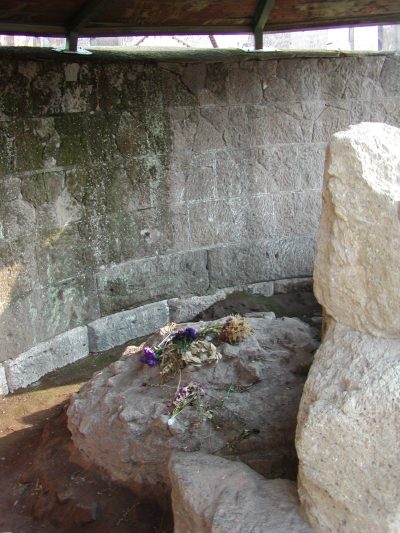
In front of the temple stood a speakers platform, the Rostra Julia, decorated with the rostra (the beak-like prows of war-ships) from the conquered navy of Antonius and Cleopatra at Actium in 31 BCE. Very little remains of this platform, but it can be seen on the the Plutei of Trajan, two reliefs kept in the Curia Julia.
With the building of the Temple of Caesar the much older buildings of the Regia and the Temple of Vesta was excluded from the Main Square of the Forum. The temple was connected to the Basilica Aemilia by a portico dedicated to Gaius Caesar and Lucius Caesar, Augustus‘ nephews, and by the Arch of Augustus to the Temple of Castor and Pollux, often identified with Tiberius and Drusus. Together with the Basilica Julia and the Curia Julia this all made the whole of the main square of the Forum a massive demonstration of the political supremacy of the Gens Julia.
Of the original temple only the podium and the part of the front with the circular altar remain. Some fragments of decorative reliefs with Victoria and floral ornaments are on display in the Antiquarium.
Links
- LacusCurtius: Platner: A Topographical Dictionary of Ancient Rome
- LacusCurtius: Hülsen: Il Foro Romano – Storia e Monumenti
(Text in Italian — nice drawing with reconstruction)
Photo gallery for "Temple of Caesar"
There are 7 photos in this gallery.
Pages related to "Temple of Caesar"
- Antiquarium
- Augustus
- Basilica Julia
- Curia Julia
- Gaius Caesar
- Lucius Caesar
- Pontifex maximus
- Tiberius
- Victoria

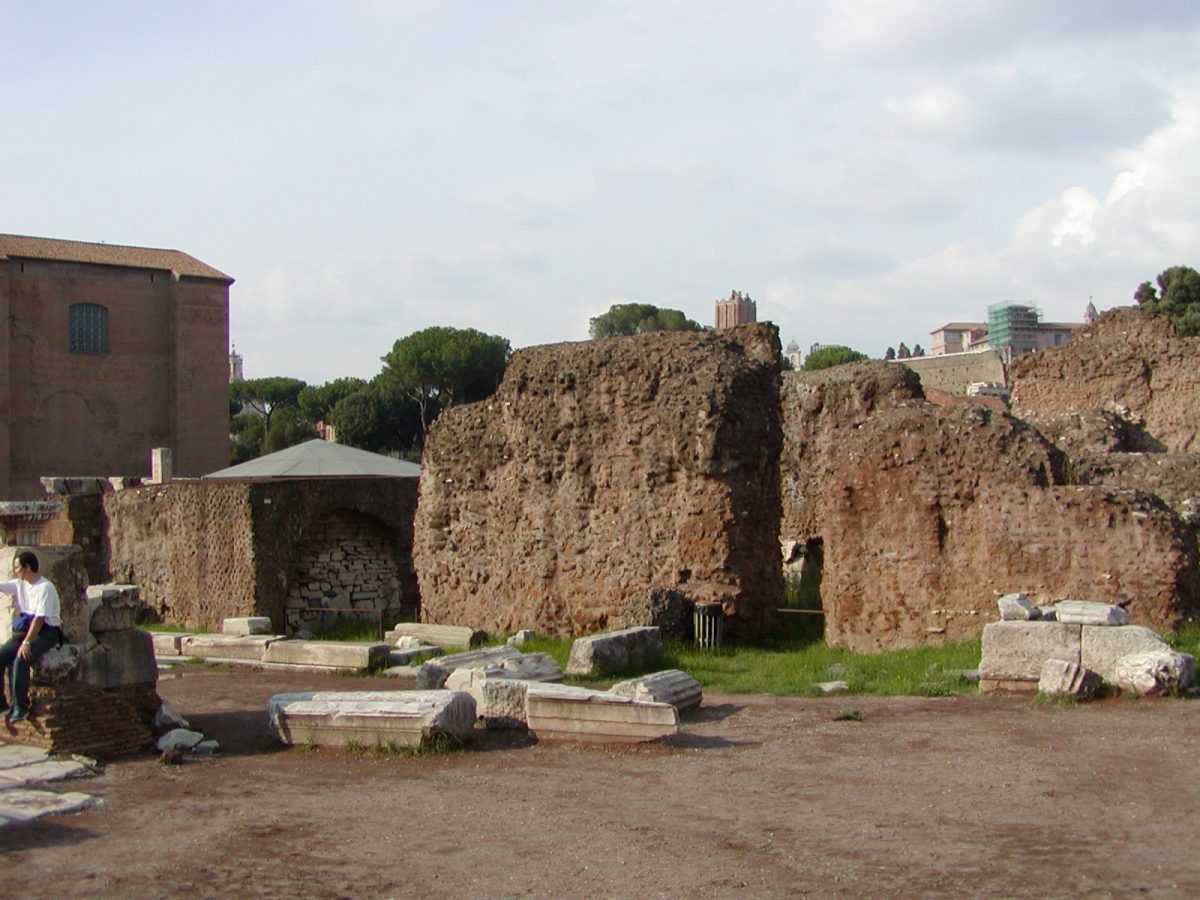
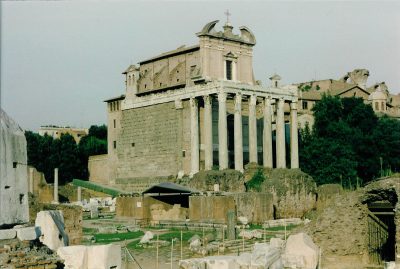
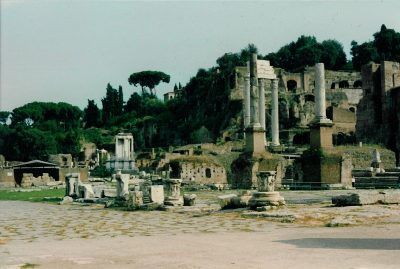
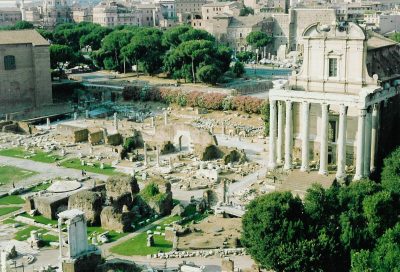
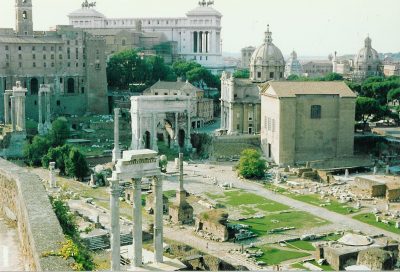
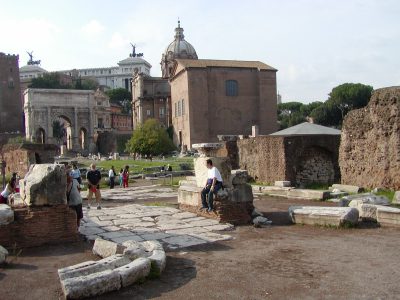
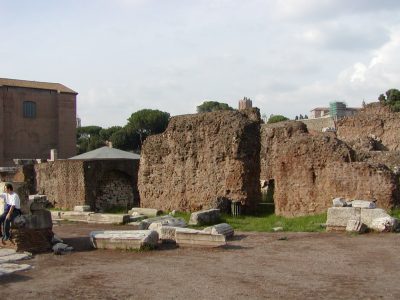
Ron says:
“Here the Via Sacra turns, almost continuing the Vicus Tuscus. On its right, on a line with the Temple of the Dioscuri, has been discovered the base of the small Temple of Julius Caesar (ylules Divi Julii),* which was surrounded with a colonnade of closely-placed columns and surmounted by a statue of the deified triumvir. ‘Hiis was the first temple in Rome which was dedicated to a mortal. Dion Cassius narrates that this temple was erected on the spot where the body of JuHus was burnt. It was adorned by Augustus with the beaks of the vessels taken in the battle of Actium, and hence obtained the name of Rostra Julia. He also placed here the statue of Venus Anadyomene of Apelles, because Csesar had claimed descent from that goddess. Here, in a.d. 14, the body of Augustus, being brought from Nola, where he died, was placed upon a bier, while Tiberius pronounced a funeral oration over it, before it was carried to the Campus Martius.”
Augustus Hare: Walks in Rome. London 1875
“Friends, Romans, countrymen, lend me your ears;
I come to bury Caesar, not to praise him.
The evil that men do lives after them;
The good is oft interred with their bones;
So let it be with Caesar. The noble Brutus
Hath told you Caesar was ambitious:
If it were so, it was a grievous fault,
And grievously hath Caesar answer’d it.
Here, under leave of Brutus and the rest–
For Brutus is an honourable man;
So are they all, all honourable men–
Come I to speak in Caesar’s funeral.
He was my friend, faithful and just to me:
But Brutus says he was ambitious;
And Brutus is an honourable man.
He hath brought many captives home to Rome
Whose ransoms did the general coffers fill:
Did this in Caesar seem ambitious?
When that the poor have cried, Caesar hath wept:
Ambition should be made of sterner stuff:
Yet Brutus says he was ambitious;
And Brutus is an honourable man.
You all did see that on the Lupercal
I thrice presented him a kingly crown,
Which he did thrice refuse: was this ambition?
Yet Brutus says he was ambitious;
And, sure, he is an honourable man.
I speak not to disprove what Brutus spoke,
But here I am to speak what I do know.
You all did love him once, not without cause:
What cause withholds you then, to mourn for him?
O judgment! thou art fled to brutish beasts,
And men have lost their reason. Bear with me;
My heart is in the coffin there with Caesar,
And I must pause till it come back to me.”
— Julius Caesar (Act 3, Scene 2, lines 73–108)
5 October 2023 — 14:34